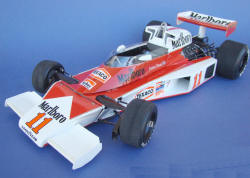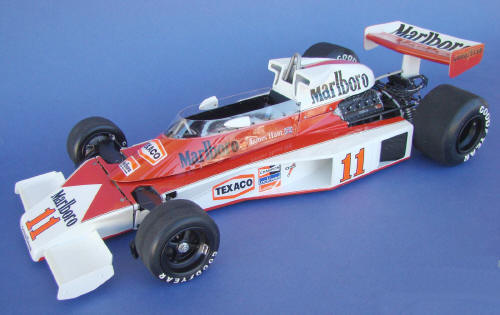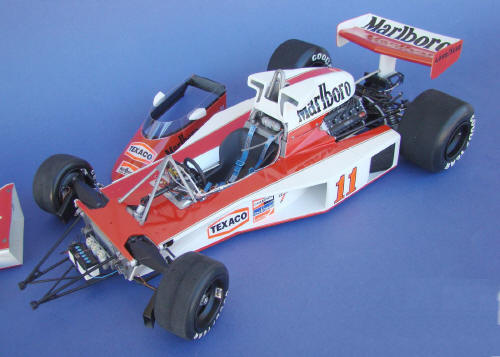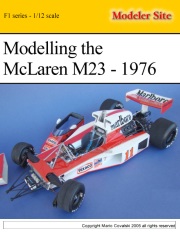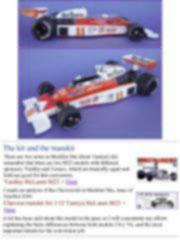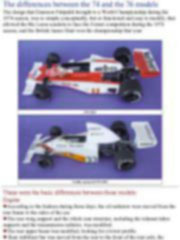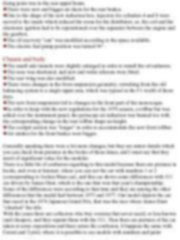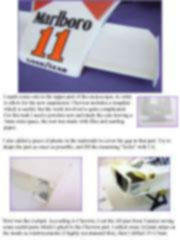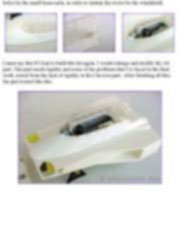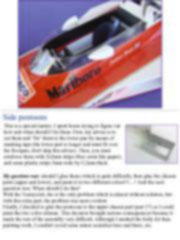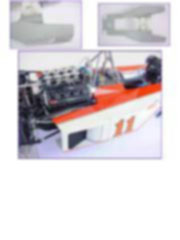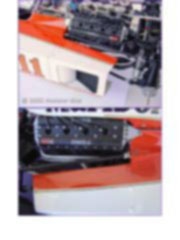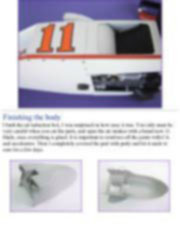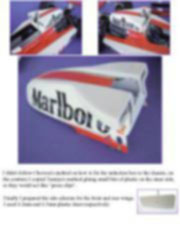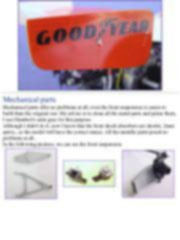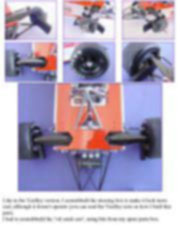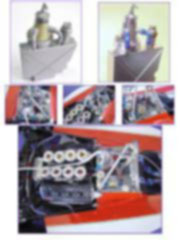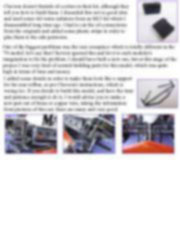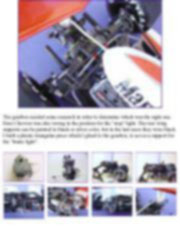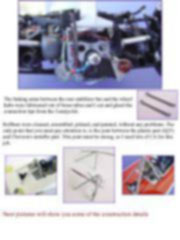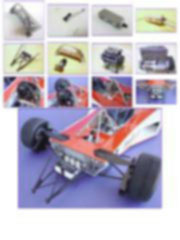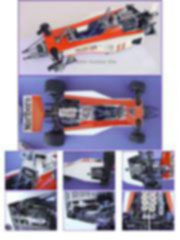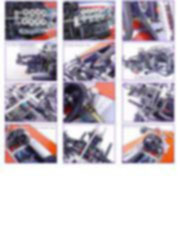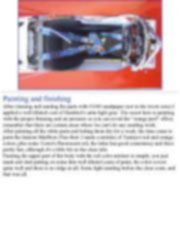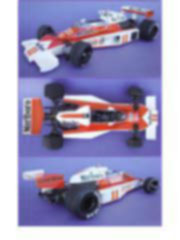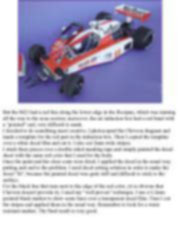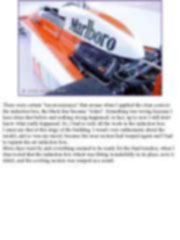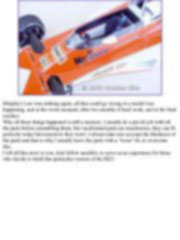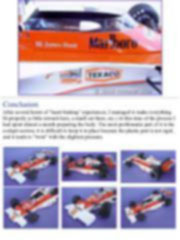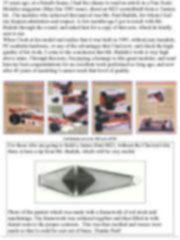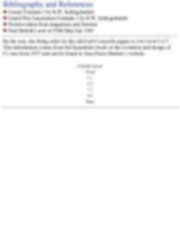|
Legal Notice
No material from Modeler Site any Web site owned, operated, licensed, or controlled by Mario Covalski & Associated may be copied, reproduced, republished, uploaded, posted, transmitted, or distributed in any way, except that you may download one copy of the materials on any single computer for your personal, non-commercial home use only, provided you keep intact all copyright and other proprietary notices. Modification of the materials or use of the materials for any other purpose is a violation of Mario Covalski & Associated's copyright and other proprietary rights.
Read More here > Legal notice
Three years ago I bought Chevron's conversion trilogy for the Ferrari 312T to T2 '77, the Tyrrell '76 to '77, and the M23 '74 to '76.
Within a year, I built the two first kits and let the McLaren for the "proper" moment (inspiration, motivation, etc.).
A few months ago I had the opportunity to convince a Japanese modeler, Mr. Kenji Yagi, to translate a few pages of the instruction manual for me. This translation is available to any modeler interested on it, I will gladly send it by e-mail.
The kit and the transkit
|
There are two notes in Modeler Site about Tamiya's kit, remember that there are two M23 models with different sponsors, Yardley and Texaco, which are basically equal and both are good for this conversion.
Yardley McLaren M23 > Here
|

|
|
I made an analysis of the Chevron kit in Modeler Site, issue of October 2000
Chevron transkit for 1/12 Tamiya McLaren M23 > Here
|

|
A lot has been said about this model in the past, so I will concentrate my efforts explaining the basic differences between both models (74 y 76), and the most important details for the conversion job.
The differences between the 74 and the 76 models
The design that Emerson Fittipaldi brought to a World Championship during the 1974 season, was so simple conceptually, but so functional and easy to modify, that allowed the Mc Laren scuderia to face the Ferrari competition during the 1976 season, and the British James Hunt won the championship that year.
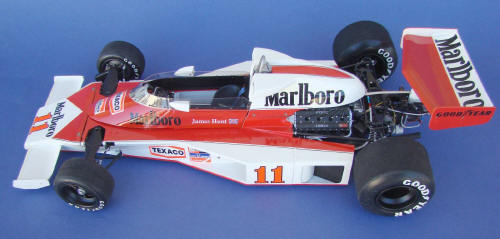
|
|
1976 M23
|
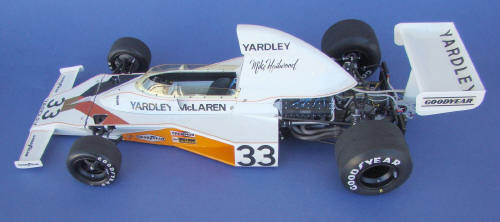
|
|
Yardley sponsored 1974 M23
|
These were the basic differences between those models:
Engine
 According to the fashion during those days, the oil radiators were moved from the rear frame to the sides of the car. According to the fashion during those days, the oil radiators were moved from the rear frame to the sides of the car.
 The rear wing support and the whole rear structure, including the exhaust tubes supports and the transmission radiator, was modified. The rear wing support and the whole rear structure, including the exhaust tubes supports and the transmission radiator, was modified.
 The rear upper beam was modified, looking for a lower profile. The rear upper beam was modified, looking for a lower profile.
 Rear stabilizer bar was moved from the rear to the front of the rear axle, the fixing point was in the rear upper beam. Rear stabilizer bar was moved from the rear to the front of the rear axle, the fixing point was in the rear upper beam.
 There were new and bigger air ducts for the rear brakes. There were new and bigger air ducts for the rear brakes.
 Due to the shape of the new induction box, injectors for cylinders 4 and 8 were moved to the inside which reduced the room for the distributor; so, the coil and the electronic ignition had to be repositioned over the separator between the engine and the gearbox. Due to the shape of the new induction box, injectors for cylinders 4 and 8 were moved to the inside which reduced the room for the distributor; so, the coil and the electronic ignition had to be repositioned over the separator between the engine and the gearbox.
 The oil recovery "can" was modified according to the space available. The oil recovery "can" was modified according to the space available.
 The electric fuel pump position was turned 90° . The electric fuel pump position was turned 90° .
Chassis and body
 The small side tunnels were slightly enlarged in order to install the oil radiators. The small side tunnels were slightly enlarged in order to install the oil radiators.
 The nose was shortened, and new and wider ailerons were fitted. The nose was shortened, and new and wider ailerons were fitted.
 The rear wing was also modified. The rear wing was also modified.
 There were changes in the front suspension geometry, switching from the old balancing system to a single upper arm, which was typical in the F1 world of those days. There were changes in the front suspension geometry, switching from the old balancing system to a single upper arm, which was typical in the F1 world of those days.
 The new front suspension led to changes in the front part of the monocoque. The new front suspension led to changes in the front part of the monocoque.
 In order to keep with the new regulations for the 1976 season, a rollbar bar was added over the instrument panel, the periscope air induction was banned too with the corresponding change in the rear rollbar shape an height. In order to keep with the new regulations for the 1976 season, a rollbar bar was added over the instrument panel, the periscope air induction was banned too with the corresponding change in the rear rollbar shape an height.
 The cockpit section was "longer" in order to accommodate the new front rollbar. The cockpit section was "longer" in order to accommodate the new front rollbar.
 Air intakes for the front brakes were bigger. Air intakes for the front brakes were bigger.
Generally speaking there were a lot more changes, but they are minor details which you can check from pictures in the books of those times, and I must say that they aren't of significant value for the modeler.
There is a little bit of confusion regarding to this model because there are pictures in books, and even at Internet, where you can see the car with numbers 1 or 2 (corresponding to Jochen Mass car), and this car shows some differences with #11 car driven by James Hunt, which is the one that won that year's championship.
Some of the differences were according to that time and they are among the other differences that the model had between 1975 and 1977. Our model depicts the car that raced in the 1976 Japanese Grand Prix, that was the race where James Hunt "clinched" the title.
With the years there are collectors who buy versions that never raced, or less known (and cheaper), and they repaint them with the #11. Then there are pictures of the car taken at some expositions and there arises the confusion. It happens the same with Ferrari and Tyrrel, where it is possible to see models with numbers and paint schemes that never existed.
Big size photos are only available in our PDF format.
Support us ordering our notes in PDF > Here
|

